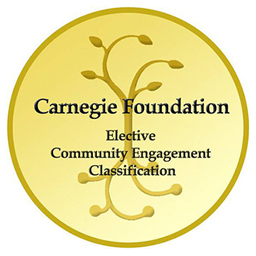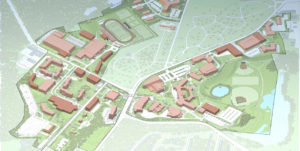

Carnegie Foundation
The Carnegie Community Engagement Classification, in a nutshell, is in essence a solid framework that encapsulates the sheer variety in US higher education.
Furthermore, you will find that it is a classification for which an institution may voluntarily apply to be listed for.
According to Carnegie, community classification is nothing short of being a symbiotic relationship between the schools that provide higher education, and the local as well as national and global communities.
This is done in lieu of exchanging pivotal information between each other, which will stand to mutually benefit both the parties concerned.
A point to note here is that this classification saw its inception in 2005.

A point to note here is that this classification saw its inception in 2005.
You will see that the very essence of this classification involves the collection of data as well as the documentation that is based on important parts of the mission of the institution, and this is something that requires a good deal of work by the organizations concerned.
It is important to note here, that this document is not to be believed to be an award. Rather, it is documentation that is evidence based, that highlights the institutional practice that needs to be used, through a process of assessment of the institution and the improvement of the quality meted out by it to its students.
In a sense, you will find that it is very much like the process of accreditation where it comes to the study of the self.
Once the documentation is in place, you will find that a National Panel reviews it, in order to ascertain whether the institution concerned qualifies as being recognized as a community engaged institution.
Needless to say, it is an accreditation that every university out there would like to have.

Two important sources.
In fact, the defining potential of the new community engagement classification began with its development process.
This relied on using insights on the rampant outstanding practices, using two important sources.
1) The efforts put in by major institutions and even groups at the national level.
2) The second source is the pilot study that gets its funding from Carnegie in lieu of examining the practices in engagement with community, the practices of engagement with community that will help to create a framework where it comes to that vital process of documentation. This study was extensive and encompassed several noteworthy institutions.
From the first source listed above, a first draft was created that served as a sort of framework.

There are certain things one needs to mull over, where it comes to seeing why this Carnegie classification is indeed worth its merit.
This draft then went on to become the focus for a comprehensive study that was undertaken by the institutions, as they went on to examine the ‘promising practices’ in their approaches relating to their assessment of themselves as well as the process of documenting things.
It was in fact this this stellar work that would lead to the arrival of the other institutions; those that would get that proverbial boost to go on ahead and apply for this classification, by finding out exactly how important and practical the indicators of practice were.
You will see that the benchmarking potential of the new Carnegie classification has already been demonstrated and is now serving to contribute to the future of the engagement of higher education institutions with the community.
There are certain things one needs to mull over, where it comes to seeing why this Carnegie classification is indeed worth its merit.
Here’s a look at them.
Why Is It Necessary To Apply For This New Classification Of Community Engagement?

There are different reasons for which different colleges have applied for this classification.
At the very outset it is important to note that this highly touted classification is one that has been embraced by schools nationwide.
Where the initial batch of applicants was concerned, they were based on a diverse collection of schools where it came to things like type, student population and even geographical location.
Of course, there are different reasons for which different colleges have applied for this classification. For instance, some schools look at this classification as a means to get recognized at the national level.
Some of them possibly see it as merely being an association with the grand Carnegie name, which in itself is a great thing for them.
If you go to see the process of gathering documents, it is pretty extensive and it requires a lot of time and effort from the institution that is applying for the said classification, in order to meet the.
Of course, it is a given that these institutions would believe that being associated with the Carnegie name is indeed worth the time and effort spent on trying to get that highly touted classification
What Kind Of Data Is Expected To Be Used? Qualitative Or Quantitative?

Where it comes to this classification, the issue of quantitative data becomes something of a problem.
Where it comes to this classification, the issue of quantitative data becomes something of a problem. You will see that unlike in the traditional classification system, there are no national data sources for community engagement that can be used for classification purposes.
In fact, the lack of the quantitative data makes it even harder to discern which institutions should be classified and which shouldn’t.
There are many of the ‘promising practices’ for instance, that simply do not lend themselves to the quantitative data well.
These are things like mission statements and leadership.
You will find that in the cases of those that do, like service learning courses, they are influenced by the size, location and other qualities of the institution.
It is the lack of this comparable quantitative data that leads to further issues of review and decision making, pertaining to what institutes are classified and those that aren’t.

how much involvement is needed to constitute an engaged campus?
In fact, you will find there are issues pertaining to how much engagement is involved for classification or how much involvement is needed to constitute an engaged campus.
Of course, it is believed that in the future the questions that are being asked will be expanded and there will be several others that will emerge, in the process of the institutions applying for this esteemed classification.
What the resulting base of documentation that will emerge will have, will be the potential to guide, inform as well as to model, the vast array of the ‘promising practices’, and thereby achieve its benchmarking function.
Moreover, you will find that things like the ongoing revision of the classification framework and the ongoing applications from the several institutions out there will be characterized by extended inquiry processes.







